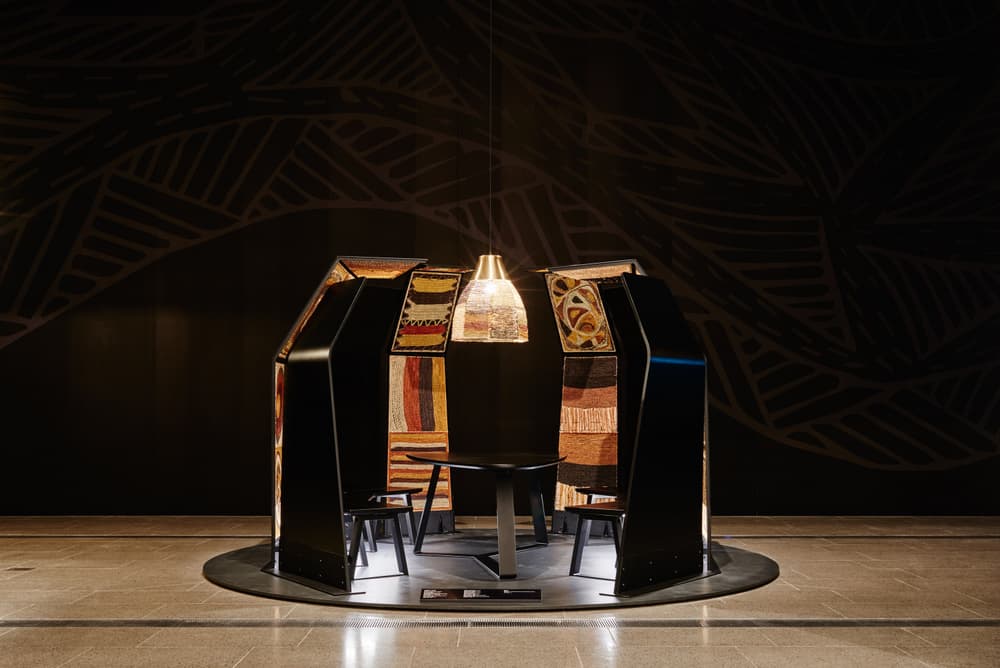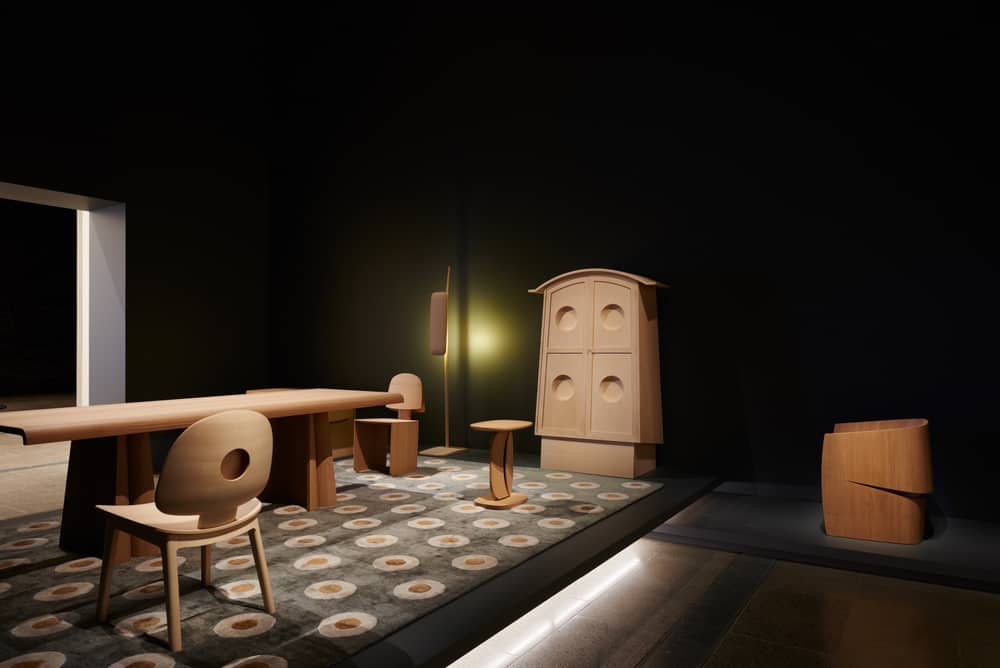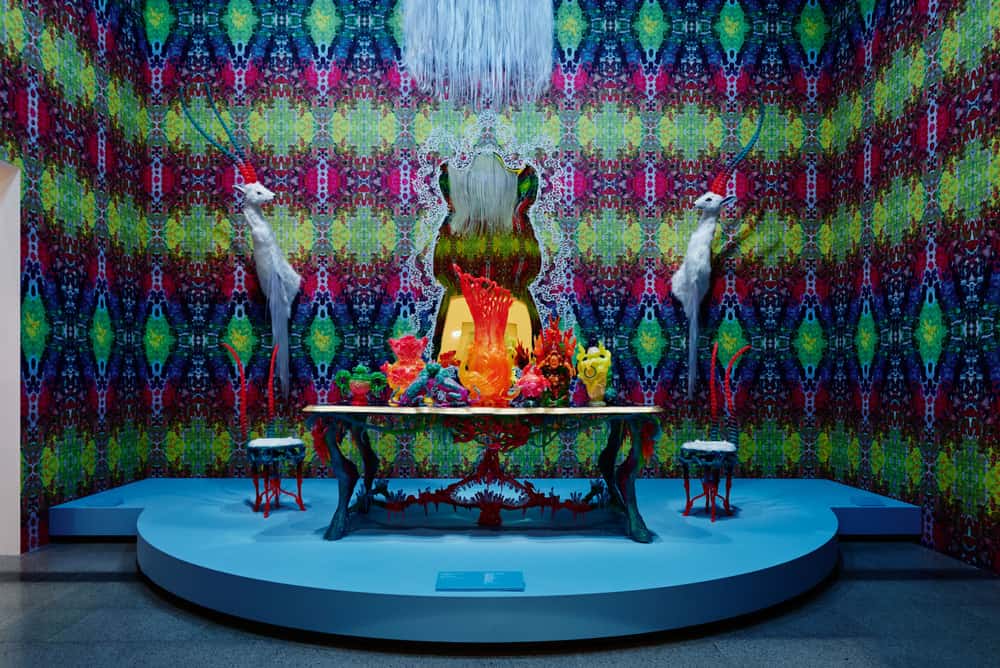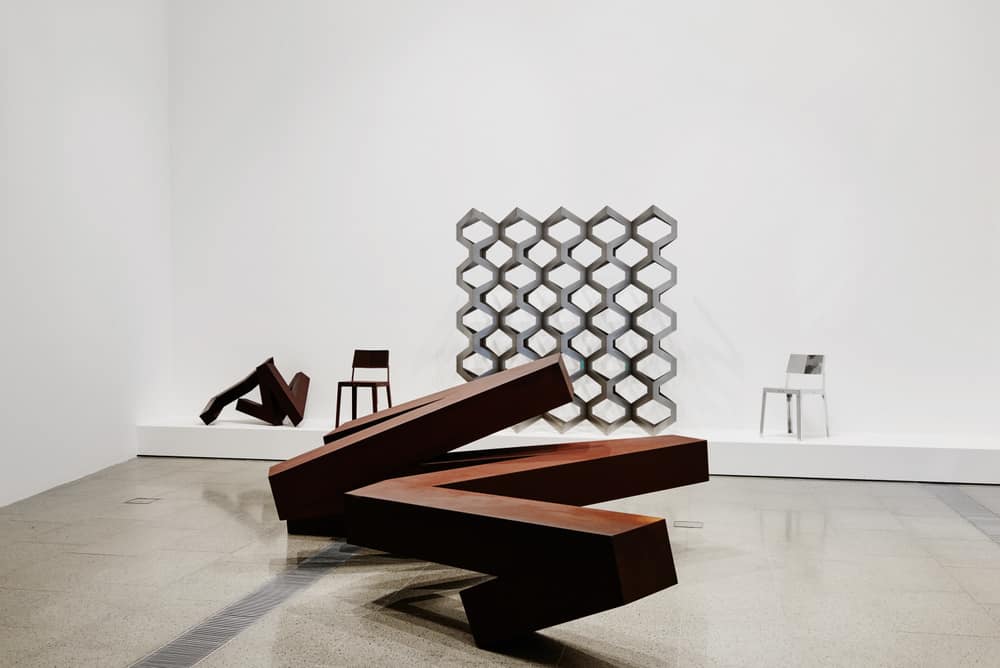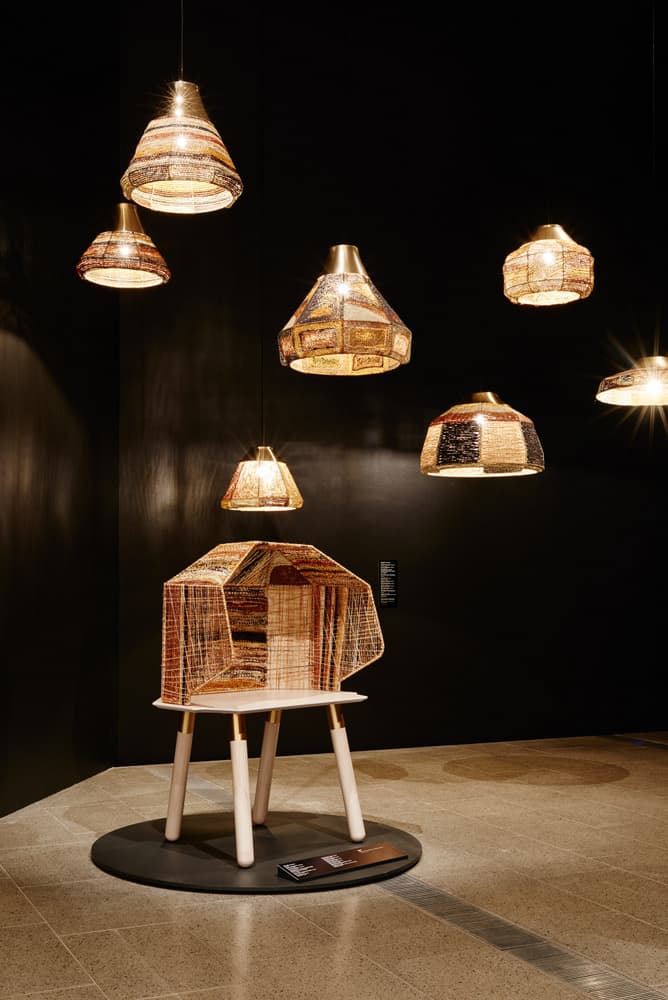- Installation view of Koskela and Weavers of Elcho Island Arts’ presentation for the Rigg Design Prize 2015 Photo: Brooke Holm
- Installation view of Khai Liew’s presentation for the Rigg Design Prize 2015 Photo: Brooke Holm Installation view of Khai Liew’s presentation for the Rigg Design Prize 2015 Photo: Brooke Holm
- Installation view of Kate Rohde’s presentation for the Rigg Design Prize 2015 Photo: Brooke Holm
- Installation view of Korban/Flaubert’s presentation for the Rigg Design Prize 2015 Photo: Brooke Holm
- Installation view of Daniel Emma’s presentation for the Rigg Design Prize 2015 Photo: Brooke Holm
- Installation view of Brodie Neill’s presentation for the Rigg Design Prize 2015 Photo: Brooke Holm
- Installation view of Adam Goodrum’s winning work ‘Unfolding’ from the Rigg Design Prize 2015 Photo: Brooke Holm
- Installation view of Koskela and Weavers of Elcho Island Arts’ presentation for the Rigg Design Prize 2015 Photo: Brooke Holm
Ludwig Wittgenstein posed the question: “How do I show approval of a suit?” and answering himself wrote, “Chiefly by wearing it often”. With this Wittgenstein invites us to relocate our understanding and appreciation of creative works from an abstracted mind space to an ongoing and re-affirming engagement with a world that is as much material, sensory and habitual as it is symbolic. This simple question-and-answer provides us with a model for how we might judge the value of anything. We might replace the word “suit” with any number of designed objects – a chair, a table, a city – and provided we replace “wearing” with a word that captures as concisely the field of experience that make the object in question meaningful to us, then what remains is the sense that our judgment of an object is found in how we choose to live with it. Assessing an object favourably is synonymous with wanting to live well with it: its design; the presence of the designer; the gestures and embodied intelligence of its maker; and the language of the materials out of which it is made. One also gives something of one’s own life – time, care, attention and resources – over to the designed object and its creative entourage.
With this view of judgment in mind, we see that the Rigg Design Prize is attempting to serve two significant but conflicting roles. Firstly, by selecting seven contemporary Australian designers to create works for exhibition in discrete installation spaces at the National Gallery of Victoria, the Rigg Design Prize asks us to receive the significance of these Australian designers’ works chiefly within that complex of experiences familiar to gallery visitors. That is, the prize positions the designed objects as works-of-art amongst other works-of-art. Even if we accept the porosity of the art/design boundary, it is the norms of the gallery space – with the commandment ‘Please do not touch’ – that seems already to preclude a form of judgement that arrives only through making contact with works that are unapologetically designed to be made and used well. If the aim of the prize is to elevate design and making to the realm of the conceptual then it succeeds, but not without considerable cost.
We might instead see the role the Rigg Design Prize as offering the gallery visitor an experience of everyday intimacy with both the works and the designers/makers that is not always accessible through gallery artworks. When we find ourselves in the presence of well-designed, well-made works, they have a way of drawing us in close – we want to touch the work; sit on it; move through it and around it. We want to take it away with us and live with it. There are clues that the Rigg Design Prize aims to complement the conceptual with the intimate. There are inviting photographs on the walls of the designers/makers as well as statements about their work. But more telling is the fact that each designer has deliberately integrated into his or her work a place to sit and dwell, though in the gallery this invitation never extends to touch.
There is a certain tension in the Rigg Design Prize between the overt invitation to enter the works via their conceptual-artistic content at arms length in a gallery space, and the tacit invitation to judge the works by making living contact with them: the latter invitation having been placed in the works through the efforts of the designers and makers.
We see, for instance, this tension in the collaboration between Koskela and the Elcho Island weavers. An irregularly shaped black meeting table sits at the centre of the installation space covered by an open dome structure made up of earthy-coloured panels of pandanus weavings. The open weave of the panels encloses the meeting space with memories of the gatherings during which they were made, all the while allowing new stories to flow through them out into the darkened space. Dim lights shaded by more weavings orbit the meeting space with other stories. This is art, certainly, but it is the shelter promised by the extraordinary weavings that invokes the wish to inhabit this work somewhere more familiar in the light of the sun.
Similarly, in the context of a gallery installation space, it is not difficult to stand outside and peer into the room furnished by the designers Daniel Emma and admire how effectively they have employed a primal language of simple geometry and elemental materials. It is also possible to stand in Kate Rohde’s wunderkammer of fluorescent-coloured cast resin furniture and iridescent wallpaper and acknowledge the influence of the Rococo and Baroque on her designs. Yet, the skill of these designers is not to be found in such detached analyses, but rather in their demonstrable skill in planting in us a desire to live within their works. Through Daniel Emma’s work we are made to long for a life of geometric simplicity and asceticism with their designs as our companions, while in Rohde’s case it is the life of super-sensitivity to colour that is perfectly sated by her works.
Likewise when we enter Khai Liew’s space, it is as if each piece of furniture were a finely crafted musical instrument – even the back supports of his chairs resemble the resonant cavities of guitars or the gaps in wooden percussion instruments. We approve of such instruments by playing them. Our bodies naturally motion towards Liew’s objects knowing that to sit on a chair or to run one’s hands across the table is to draw forth a musical note. Koran/Flaubert “quick line” and “slow line” metal works on the other hand are instead an evocation of an intense conversation between existentialist philosophers: a feeling confirmed by the presence of two chairs in the space – one of rusty iron and the other polished aluminium. Meanwhile Brodie Neill’s works are like Tibetan prayer wheels for master makers: as we spin his objects in our minds and brush them with our hands, we are brought into silent communion with metal, wood, glass, resin on the edge between the possible and impossible. All these works pave the way towards living designs.
It is fitting then that the prize-winning work by Adam Goodrum seems to make the most lasting impression on the viewer. Paradoxically, it is the impermanence and near invisibility of Goodrum’s flat-pack, folding Perspex houses that mark the way to exceptional contemporary design. These works remind us that enduring design is located somewhere else. It is submerged in the everyday lives of people who simply could not live without the work of skilled designers and makers.
Author
 Dr Maurizio Toscano is a lecturer in education at the University of Melbourne’s Graduate School of Education. His interests and expertise range across multiple disciplines within the arts, the sciences and the humanities. Both his theoretical and practical work – especially through collaboration with artists, makers, educators and scholars – is directed at discovering new ways of encountering the world. His current research focuses on the relationships between art, science and metaphysics in re-imaging education.
Dr Maurizio Toscano is a lecturer in education at the University of Melbourne’s Graduate School of Education. His interests and expertise range across multiple disciplines within the arts, the sciences and the humanities. Both his theoretical and practical work – especially through collaboration with artists, makers, educators and scholars – is directed at discovering new ways of encountering the world. His current research focuses on the relationships between art, science and metaphysics in re-imaging education.

